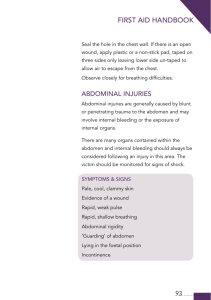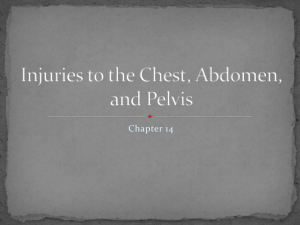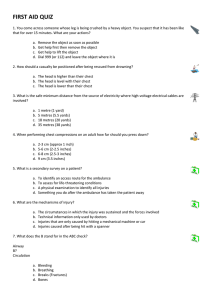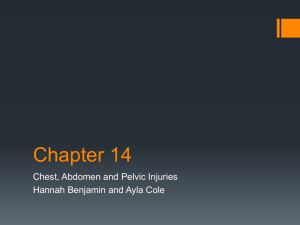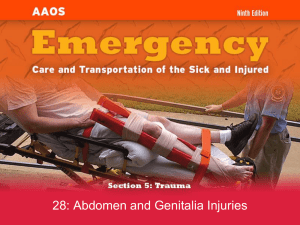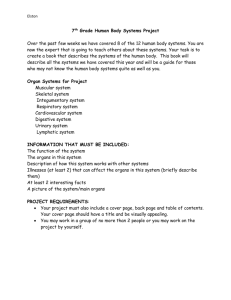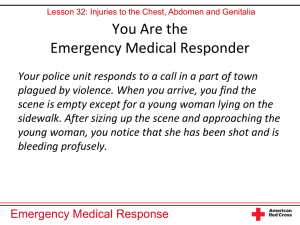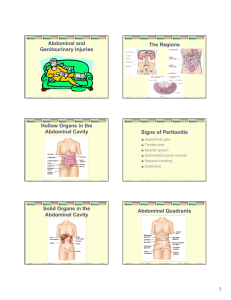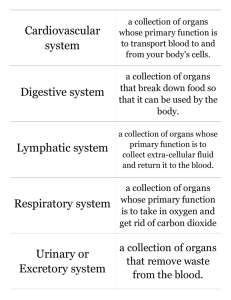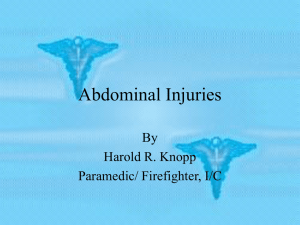Board Questions
advertisement
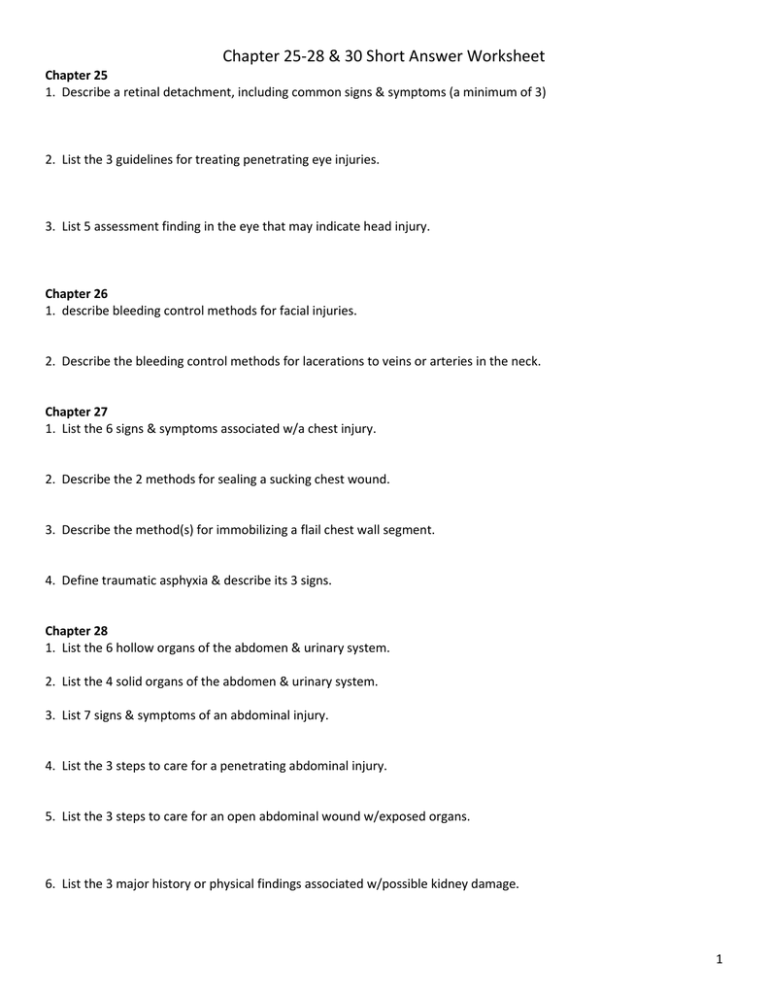
Chapter 25-28 & 30 Short Answer Worksheet Chapter 25 1. Describe a retinal detachment, including common signs & symptoms (a minimum of 3) 2. List the 3 guidelines for treating penetrating eye injuries. 3. List 5 assessment finding in the eye that may indicate head injury. Chapter 26 1. describe bleeding control methods for facial injuries. 2. Describe the bleeding control methods for lacerations to veins or arteries in the neck. Chapter 27 1. List the 6 signs & symptoms associated w/a chest injury. 2. Describe the 2 methods for sealing a sucking chest wound. 3. Describe the method(s) for immobilizing a flail chest wall segment. 4. Define traumatic asphyxia & describe its 3 signs. Chapter 28 1. List the 6 hollow organs of the abdomen & urinary system. 2. List the 4 solid organs of the abdomen & urinary system. 3. List 7 signs & symptoms of an abdominal injury. 4. List the 3 steps to care for a penetrating abdominal injury. 5. List the 3 steps to care for an open abdominal wound w/exposed organs. 6. List the 3 major history or physical findings associated w/possible kidney damage. 1 Chapter 30 1. List the 5 basic questions to ask a conscious patient when conducting an assessment of a head or head & spine injury. 2. List 3 reasons for not placing the head/spine injury patient’s head into a neutral in-line position. 3. List the 3 major types of brain injuries. 4. List @ least 5 signs & symptoms of a head injury. 5. List the 3 general principles for treating a head injury. 6. List the six questions to ask yourself when deciding whether or not to remove a helmet. 2
